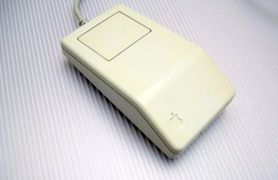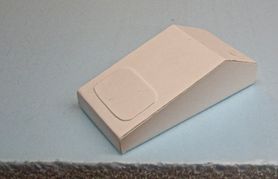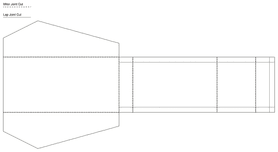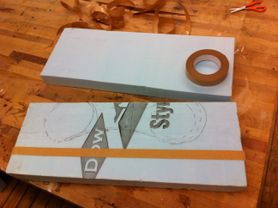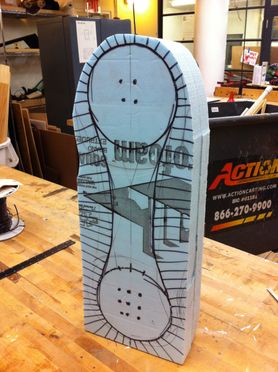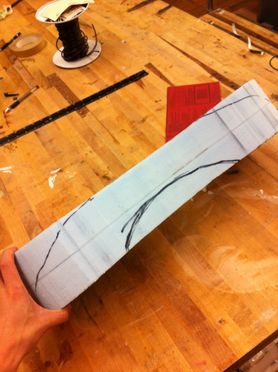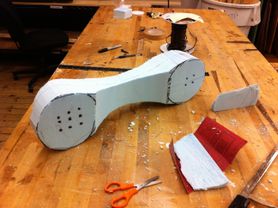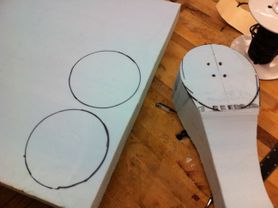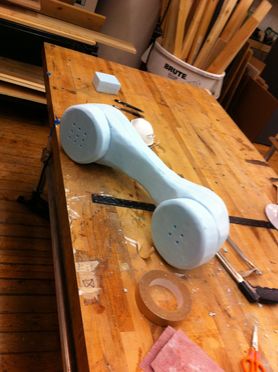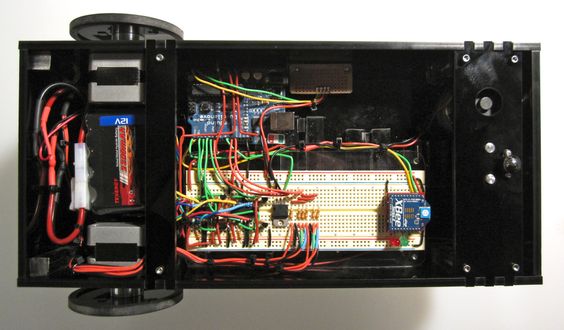I have a couple of ideas for big screens that attempt to visualize and force into perspective large volumes of real-time data.
For a little context, here’s an archive of past big screens projects.
Private Radio
Anyone carrying a cell phone has a radio signature… whether they like it or not they are emitting and receiving radio waves as various gadgets talk to the web.
I’d like to fill the IAC with a network of antennas to pick up chatter from GSM / CDMA / WIFI wavelengths and map the audience’s radio presence to a visualization on the screen.
Ideally the antennas would have some sense of the location of different levels of signal strength throughout the room, which could in turn create regions of high and low radio concentration. If someone receives or places a call, presumably they would create.
WiFi packet sniffers also give access to huge volumes of real-time data, although the vast majority is just the machine-machine chatter necessary to keep networks alive.
The scale of the screen would be used both as a 1:1 real-time heat-map of radio activity in the space, possibly with node-style connections drawn between maxima. This map would be overlaid with data collected at different wavelengths streaming across the screen horizontally.
I’m not completely sure of the technical feasibility of this project, and the hardware involved might be expensive (at best) or logistically / technically untenable (at worst) — I plan to speak with Eric Rosenthal and Rob Faludi for a reality check.
Real Time Web Clock
Our daily use of the web consists of a call / response model that makes the web seem relatively stable and even a bit static. However, new content is dumped on at such a remarkable rate that it might be more useful to think of the web as a real-time stream.
To put this into context: 100 years of video was uploaded to YouTube today. 7309 edits were made to Wikipedia in the last hour. 4,459 photos were uploaded to Flickr in the last minute. Around 600 tweets were posted in the last second. For every second that passes on the clock, 4.5 hours are spent on Facebook.
I’d like to make a linear, timeline style clock that runs for exactly three minutes, starting with a blank screen and rapidly filling with real-time web content of various types.
The clock would probably be arranged by duration and depth. The first layer would be 10ths of a second. The next would be Individual seconds, the back layer would be minutes. The clock wouldn’t “tick” but scroll smoothly in real time. The layers would combine to create a parallax effect and build up a wall of content and noise over the course of three minutes.
And for good measure, here’s one more idea that’s more of a vague pipe dream than an actual plan:
Live Coding
Has this ever been done before at the IAC? Is 3 minutes enough time to do anything? Presumably you could run a python interpreter on top of Processing or something of the sort and distribute fresh strings of code to each Mac Pro using a socket server. Crashes and restarting would be problematic, and the big screens audience might not be nerdy enough to enjoy a process instead of a product.
Feedback:
Patrick: Using a prop to stage the radio scanning. Airport security like wand or kiosk?
Niel: Finding the wavelength of various web 2.0 services… interleave and audio.


